-
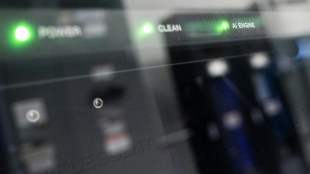 OECD raises US, eurozone growth targets as world economy 'resilient'
OECD raises US, eurozone growth targets as world economy 'resilient'
-
'Superhuman' Salah unhappy after being dropped, says Liverpool's Slot

-
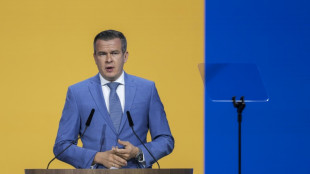 Major sports anti-doping conference opens with call for unity
Major sports anti-doping conference opens with call for unity
-
Tens of thousands flock to pope's Beirut mass

-
 Formula One title showdown: the road to Abu Dhabi
Formula One title showdown: the road to Abu Dhabi
-
Pope Leo holds Beirut mass, visits port blast site

-
 Hong Kong leader says independent committee to probe fire
Hong Kong leader says independent committee to probe fire
-
How deforestation turbocharged Indonesia's deadly floods

-
 New Zealand 231-9 as 'old school' West Indies exploit pace-friendly wicket
New Zealand 231-9 as 'old school' West Indies exploit pace-friendly wicket
-
England spinner Jacks replaces injured Wood for second Ashes Test

-
 Pope Leo to hold Beirut mass, visit port blast site
Pope Leo to hold Beirut mass, visit port blast site
-
Australia opener Khawaja out of second Ashes Test with injury

-
 Concern as India orders phone manufacturers to preload govt app
Concern as India orders phone manufacturers to preload govt app
-
French talent Kroupi 'ready to suffer' to realise Premier League dream

-
 New Zealand 231-9 as West Indies exploit bowler-friendly wicket
New Zealand 231-9 as West Indies exploit bowler-friendly wicket
-
US Republicans sweat toss-up election in traditional stronghold

-
 'Rescued my soul': Hong Kong firefighters save beloved pets
'Rescued my soul': Hong Kong firefighters save beloved pets
-
Suns eclipse shoddy Lakers, Mavs upset Nuggets

-
 Seven footballers in Malaysia eligibility scandal 'victims': union
Seven footballers in Malaysia eligibility scandal 'victims': union
-
Patriots on brink of playoffs after Giants rout

-
 Survivors, families seek answers to deadly Hong Kong ferry disaster
Survivors, families seek answers to deadly Hong Kong ferry disaster
-
Race to get aid to Asia flood survivors as toll nears 1,200

-
 Rugby World Cup draw: who, how and when?
Rugby World Cup draw: who, how and when?
-
Williamson falls for 52 as NZ reach 128-5 in West Indies Test

-
 Hong Kong leader announces 'independent committee' to probe fire
Hong Kong leader announces 'independent committee' to probe fire
-
South Korean leader calls for penalties over e-commerce data leak
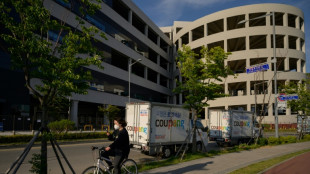
-
 Samsung unveils first 'special edition' triple-folding phone
Samsung unveils first 'special edition' triple-folding phone
-
Apple AI chief leaving as iPhone maker plays catch-up
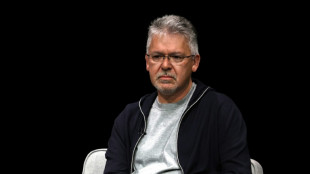
-
 Asian markets rise as US rate cut bets temper Japan bond unease
Asian markets rise as US rate cut bets temper Japan bond unease
-
Weight of history against England in pink-ball Gabba Ashes Test

-
 How South Korea's brief martial law upended lives
How South Korea's brief martial law upended lives
-
VR headsets take war-scarred children to world away from Gaza

-
 'We chose it': PKK fighters cherish life in Iraq's mountains
'We chose it': PKK fighters cherish life in Iraq's mountains
-
US envoy to meet Russia's Putin for talks on ending Ukraine war
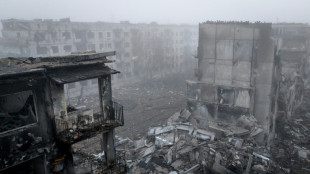
-
 Pope Leo holds Beirut mass and visits site of port blast
Pope Leo holds Beirut mass and visits site of port blast
-
'Quad God' Malinin ramps up Olympic preparations at Grand Prix Final

-
 New Zealand 17-1 at lunch in rain-hit West Indies Test
New Zealand 17-1 at lunch in rain-hit West Indies Test
-
Pacific island office enabling sanctions-busting 'shadow fleets'

-
 White House gets scaled-down Christmas display amid ballroom work
White House gets scaled-down Christmas display amid ballroom work
-
GEN Announces New Positive Phase 1 Trial Data of the Investigational Drug SUL-238 for Alzheimer's and Other Neurodegenerative Diseases

-
 White House confirms admiral ordered 2nd strike on alleged drug boat
White House confirms admiral ordered 2nd strike on alleged drug boat
-
Nigeria's defence minister resigns amid security crisis: presidency

-
 From Honduras to Poland, Trump meddles in elections as never before
From Honduras to Poland, Trump meddles in elections as never before
-
Trump holds Venezuela meeting as Maduro rejects 'slave's peace'

-
 12 dead, dozens missing as landslide submerges boats in Peru port
12 dead, dozens missing as landslide submerges boats in Peru port
-
Vardy's first Serie A double fires Cremonese past high-flying Bologna

-
 Rich art: French pastry chefs auction chocolate sculptures
Rich art: French pastry chefs auction chocolate sculptures
-
Cameroon sack coach Brys, drop goalkeeper Onana for AFCON

-
 Son of Mexican crime lord 'El Chapo' pleads guilty in drug case: US media
Son of Mexican crime lord 'El Chapo' pleads guilty in drug case: US media
-
Right-wing rivals for Honduras presidency in 'technical tie'
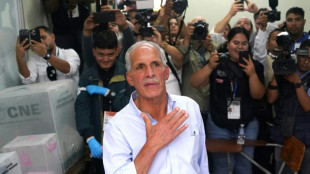
| RBGPF | 1.54% | 79 | $ | |
| RYCEF | -2.68% | 13.83 | $ | |
| CMSD | -0.13% | 23.29 | $ | |
| VOD | -2.8% | 12.13 | $ | |
| GSK | -1.42% | 47.19 | $ | |
| AZN | -2.44% | 90.52 | $ | |
| CMSC | -0.39% | 23.32 | $ | |
| SCS | 0.55% | 16.38 | $ | |
| RELX | -1.23% | 39.72 | $ | |
| NGG | -0.61% | 75.65 | $ | |
| RIO | 0.03% | 71.97 | $ | |
| BTI | -0.91% | 58.13 | $ | |
| JRI | -0.15% | 13.78 | $ | |
| BCC | -1.18% | 75.13 | $ | |
| BCE | -0.09% | 23.49 | $ | |
| BP | 1.12% | 36.51 | $ |
Adobe down 40%: Kodak moment?
Adobe’s stock has spent the summer trading roughly 40% below its 52-week high, a striking reversal for a company long treated as a bellwether of the creative economy. The sell-off reflects a convergence of pressures: intensifying AI-driven competition, regulatory scrutiny of subscriptions, controversial pricing changes, and a shifting center of gravity from applications to underlying AI infrastructure. The question hanging over the market is whether Adobe faces a Kodak-style disruption—or is merely navigating a bruising but temporary reset.
The slide behind the headline
As of mid-August, shares remain about 40% beneath last year’s 52-week high, underscoring how swiftly sentiment has flipped from euphoria around generative AI to worries about commoditization. The drop has also been amplified by analyst downgrades that argue value may be migrating from application-layer software to AI infrastructure and platforms.
Competitive shock: AI eats software (and design)
The rise of text-to-image and text-to-video tools has lowered creative barriers for individuals and enterprises alike. Web-first design platforms and AI-native video apps are courting Adobe’s core audience with lower prices, simpler workflows, and collaborative features that feel “good enough” for many use cases. Adobe’s aborted attempt to buy a fast-growing design rival left that competitor independent—and emboldened. Meanwhile, a separate deal created a powerful alternative bundle for creative pros by combining a mass-market design platform with a full professional suite.
Pricing, packaging and customer trust
Adobe is hiking and repackaging parts of Creative Cloud, rebranding “All Apps” to “Creative Cloud Pro” with expanded generative features. For some customers, the shift promises more AI value; for others, it reinforces “subscription fatigue” and raises the risk of churn to cheaper alternatives. Compounding the perception problem, U.S. regulators have sued Adobe over alleged “dark patterns” in subscription cancellations—claims the company denies. Regardless of the legal outcome, the episode has kept pricing and trust squarely in the headlines.
Product reality check: far from standing still
It would be a mistake to equate a falling share price with a failing product engine. Adobe continues to ship at pace: newer Firefly models add higher-fidelity image generation and expanding video features; core apps like Photoshop, Illustrator and Lightroom keep absorbing AI-assisted tooling; and the company is pushing “content credentials” and indemnities aimed at enterprises wary of copyright risk. Under the hood, the financial machine still hums: record quarterly revenue, double-digit growth in its Digital Media segment, and a large recurring-revenue base suggest substantial resilience.
Buybacks vs. disruption
Management has been retiring shares under a multi-year, $25 billion repurchase authorization—classic playbook for signaling confidence and supporting EPS. But buybacks don’t answer the existential question: if AI ultimately turns many creative tasks into commodity services, can Adobe preserve pricing power and premium margins at application level?
Is this really a “Kodak moment”?
Kodak’s mistake wasn’t missing a feature—it was clinging to a cash-cow business model while the medium itself changed. Adobe’s risk rhymes, but is not identical:
- The bear case: If AI creation and editing consolidate into low-cost, browser-based suites and assistants embedded by cloud and OS giants, Adobe’s subscription pricing could face sustained pressure. Regulatory and reputation hits around subscriptions or data use could accelerate defections at the margin.
- The bull case: Creative workflows remain multi-step, brand-sensitive, and quality-obsessed. Enterprises still prize compliance, provenance, and integration across design, marketing, and document ecosystems—areas where Adobe is deeply entrenched. If Firefly and Acrobat AI become indispensable “copilots,” Adobe can monetize AI inside a platform customers already trust.
- Most likely near-term: A grind. Revenue and ARR continue to grow at a healthy clip, but multiples reflect uncertainty about long-run AI economics. Execution on pricing, retention, and enterprise AI value will decide whether this reset becomes a rerating upward—or a slow leak. Enterprise AI adoption of Firefly and Acrobat AI (features used at scale, not just trials). Regulatory outcomes in the U.S. subscription case and any spillover into practices globally.
Partner ecosystem—how deeply Adobe’s AI models integrate with (or get displaced by) hyperscaler stacks. Adobe’s 40% drawdown signals a market repricing of app-layer software in the AI era—not proof of a Kodak-style collapse. The company still has brand, distribution, and cash flow on its side. Whether that’s enough will depend less on dazzling demos and more on something prosaic: making AI raise productivity, reduce friction, and earn its keep for paying customers.

Ishiba's Plan to Change Power in Asia

EU: Online platforms to pay tax?

EU: Energy independence achieved!

EU: Record number of births!

EU: Military spending is on the rise!

Crisis: EU bicycle production drops!

EU: Foreign-controlled enterprises?

EU DECODED: Deforestation law’s trade-offs

Underwater Wi-Fi: European startups woo investors

Trump's US support for Ukraine and China?

Cultural year 2024: between Qatar and Morocco




